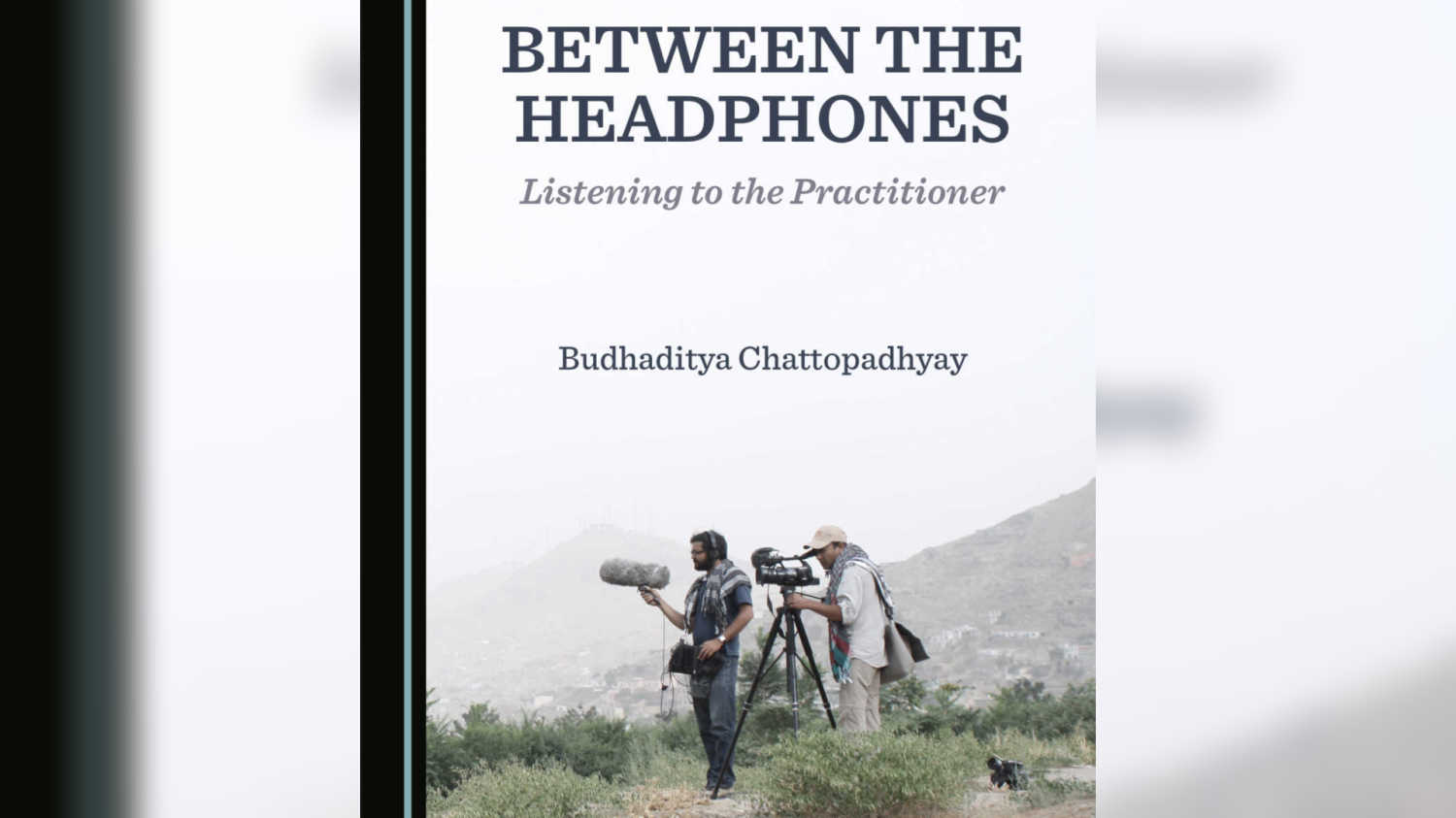Budhaditya Chattopadhyay's anecdotal book is an interesting look into the work, craft and guile that goes into making sound in movies appear natural and enhance scenes.
Between the Headphones review: A sneak peek into the magical world of sound behind the camera
Mumbai - 05 Jun 2021 7:30 IST


Shriram Iyengar
One of the more fascinating parts of any conversation is the details that emerge from it. If this conversation involves someone who has been a part of an artistic event or creation that has seeped into the public consciousness, it feels all the more magical.
Budhaditya Chattopadhyay's Between the Headphones offers a similar experience through its anecdotal examination of the technology, nature and use of sound in Indian cinema. Told through the voices of directors and sound recordists who have been part of some of the most iconic works of Indian cinema, it acquires greater power.
Though anecdotal, the details and technical information that emerge through the book are fascinating and valuable. Understandably, there is a fair bit of jargon and some technical terms that requre closer attention. These, however, do not dissuade you from reading further. For the student of cinema, particularly sound, these are but stepping stones to discovering more.
Yet, it is the detailed unravelling of stories, experiences and decisions that hold the work up. The reader can pick from Shyam Benegal explaining the use of multiple mikes on location to help look at sound the same way a photographer looks at light, or Jyoti Chatterjee talking about how they used a Krishnakoli flower petal to replicate the hum of mosquitoes for Satyajit Ray's Goopy Gyne Bagha Byne (1969). For the informed reader, these would work as sneak peeks into the guile, inventiveness and dexterity required to maintain the high naturalistic standards at a time when technology was still in its infancy. These anecdotes not only reveal the ingenuity of those behind the screen, but also, in some cases, their generosity.
Sound design, mixing and recording have been the dark knights of cinema. While no cinematic experience, in the post-talkie world, would be complete without a sonic dimension, the work remains largely unacknowledged. So for these practitioners to be generous enough to credit their directors and peers for innovation is quite magnanimous. When Subash Sahoo credits the sudden commercial popularity of synch sound to Nakul Kamte's work in Lagaan (2001), or Vishal Bhardwaj for the vision to allow deeper exploration of ambient sounds in Maqbool (2004), it comes as a pleasant surprise.
Another aspect that emerges from these conversations is the slow but steady evolution of understanding of the medium of sound in Indian cinema. This evolution has not been smooth, nor easily accepted. One can see why, when Vinod Subramaniam describes the hilarity of trying to create a ''silent'' chopper sound for a director. One gets the idea that the amount of technical knowledge, expertise and constant upgrades required to stay relevant make these artistes look like magicians to those who lack the same awareness. Yet, what they do is rooted in their keen observation of the world around them. From recording water movements to noticing that the wind in a farm in Bengal moves differently to that in a farmland in Bihar, they rely on their experience of the world to shape the world on screen.
Between the Headphones is a fascinating journey through the evolution of sound recording, mixing and understanding in Indian cinema through the lens of some of its popular practitioners. In that, it offers the layman a chance to read through some fascinating experiences, while it offers the technophile and cinephile some invaluable insights.
Between the Headphones by Budhaditya Chattopadhyay is published by Cambridge Scholars Publishing. Click here to purchase your copy.
Related topics
Book review

